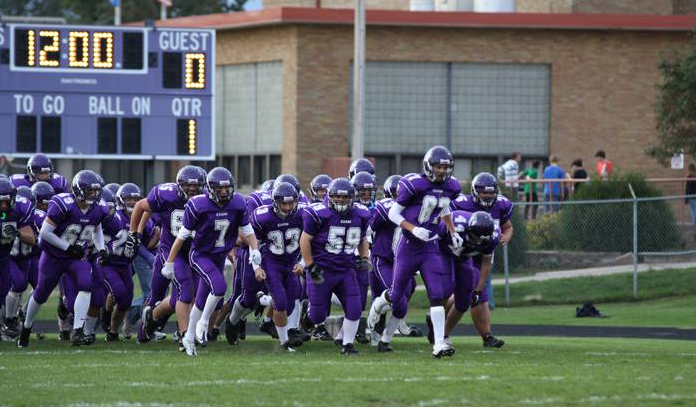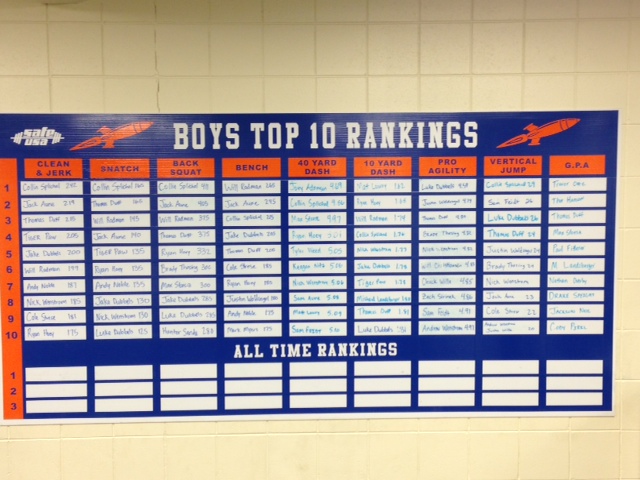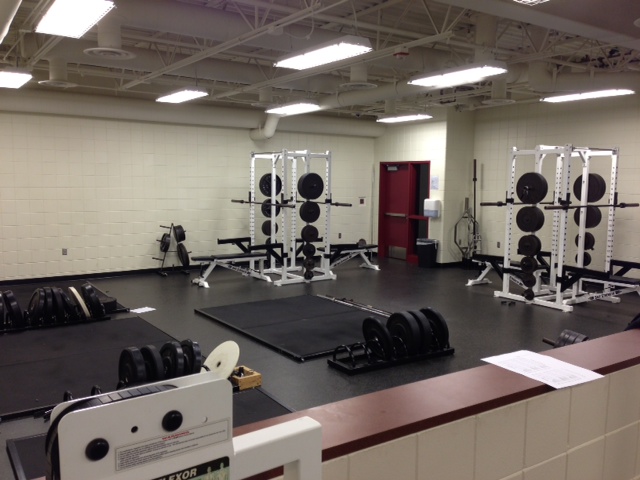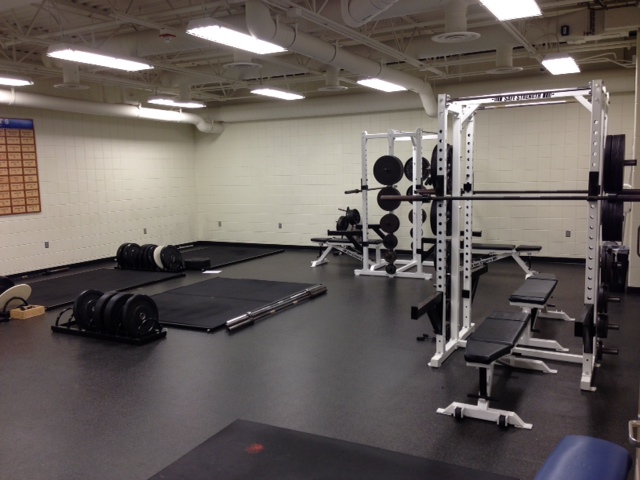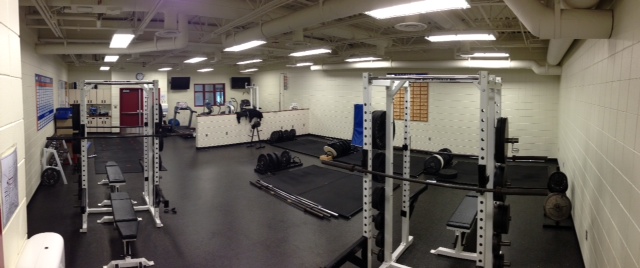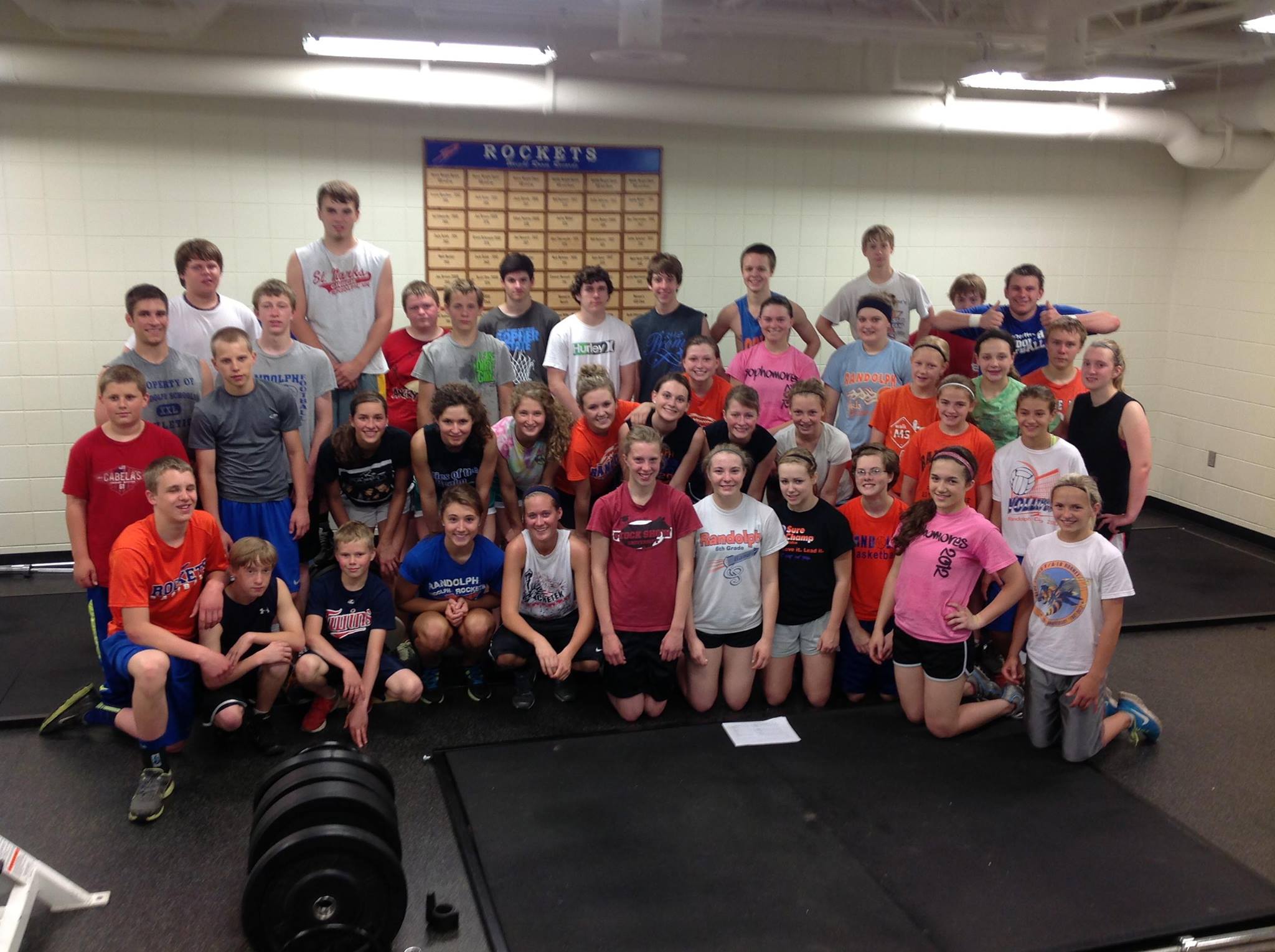The football off-season is here! It’s time to evaluate and to make the changes needed in order to give your team the opportunity to reach their highest potential. Now is the time to look to improve team leadership, your strength program, and learn how to compete frequently!
Category Archives: Coaching
Technology In the Weight Room
Strength Pro shows some readily accessible pieces of technology which will assist in developing better athletes and giving instant feedback. This can be used in the weight room, or in nearly any field of play.
Front Squat Progression / Team Mobility
We use aspects of the front squat progression to also look at mobility/flexibility for athletes. This method can be used with a large team to test or “look” for flexibility/mobility issues and will be a great starting point for the front squat. Range of motion/depth is very important while maintaining correct athletic body positioning. Check out the video to see how it’s done:
Strength Training 101 – How to efficiently handle large groups
This will be an ongoing series of articles on how to efficiently handle large groups and still incorporate high skill/high quality movements. Sharing these ideas can help all of us run better strength programs. Our first in this series is Little Falls High School in Little Falls, MN. Nick Abbott is the head strength coach. Little Falls has around 500 students in grades 10-12 and plays 4A 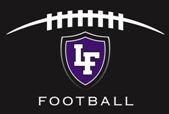 football in the Granite Ridge conference.
football in the Granite Ridge conference.
Strength Pro - Coach Abbott, tell us a little bit about Little Falls High School. “Little Falls is in Section 8AAAA for football. We have roughly 170 students per grade. Our weight room basically consists of 6 squat racks, 6 bench stations, 9 platforms, db’s up to 75lb, kb up to 40lb, 30 steel rods 12lb. 10 female bars, old desktop computer for record keeping, 4 sets pulling boxes for platforms. The room is 95 feet by 40 feet.”
“Jack Marmon and myself are the head coaches. Jack is key in this process because he has been doing this long before I came around, and he is a wealth of knowledge. I run the strength and conditioning during the fall and winter seasons and Jack runs it during the spring season while I’m coaching track. The 2 assistants are different each year depending on who is available. This year we are really lucky to have 2 graduates of Little Falls that now manage gyms when they are not helping us. These guys add a lot to our program. All four of us work each session. The mornings go by very fast. “
Training times for the summer are as follows. All are Monday, Wednesday, Friday
High School – Grades 9 – 12
- 7:00 – 8:30 am
- 8:30 – 10:00 am
- 2 Groups. Average about 60 to 70 per group.
- 3 days per week.
- 1 hour 30 minutes each.
Middle school – Grades 7 & 8
- 10:00 – 11:00 am
- 1 group. up to 50 kids
- 3 days per week.
- 1 hour each.
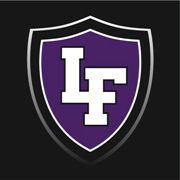 Strength Pro – So tell us how you handle these huge groups of athletes and still do Olympic lifts and quality running. “We spend a lot of our time on the big multi-joint movements. Our kids are soooo busy during the school year and even more so during the summer that we feel we need to teach the big movements with good technique. Before I took the USAW Level 1 course, (Coach Abbott took the USA Weightlifting Level I course about a year ago) we used the squat, bench, power clean as our main movements. After the course we know to take time to teach the clean & jerk and snatch variations, and we use pulling blocks as well. Kids pick up on a lot of athleticism during the process of learning the Olympic lifts. We also find that 12 and 15lb bars are great for learning the movements.
Strength Pro – So tell us how you handle these huge groups of athletes and still do Olympic lifts and quality running. “We spend a lot of our time on the big multi-joint movements. Our kids are soooo busy during the school year and even more so during the summer that we feel we need to teach the big movements with good technique. Before I took the USAW Level 1 course, (Coach Abbott took the USA Weightlifting Level I course about a year ago) we used the squat, bench, power clean as our main movements. After the course we know to take time to teach the clean & jerk and snatch variations, and we use pulling blocks as well. Kids pick up on a lot of athleticism during the process of learning the Olympic lifts. We also find that 12 and 15lb bars are great for learning the movements.
Our motto is:
1. Learn the lift
2. perform consistently
3. add stress.
We use the bench press and military press as our main upper body movements. We know also went from just doing back squat to squatting each day. It may be a back, front, overhead, or goblet squat, but do it everyday and we do it deep. The big thing that we think helps is teaching the kids and expecting them to understand how and why the lifts are done and work. This helps the athletes buy in to the movements as well.
Example: Today we had 70 in the first group and 55 in the second and 48 in the middle school group. There are 2 head coaches and 2 assistant coaches for a total of 4 coaches doing our summer program. 2 coaches stay inside and 2 go outside. Our training structure looks like this:
- We tend to start warm ups 5 minutes early so we get the full 45 minutes to lift and 45 to work on running and movement skills.
- We then take the 30 plus kids in the weight room and make 2 groups.
- I usually take the group that does the Olympic lifts first
- My assistant takes the group that will be doing the squat variation, bench, RDL, or auxiliary lift.
We switch about halfway through so kids get coaching on everything. We try to get 3 lifts and a finisher at the end. A finisher would be farmer carries, kettlebell work, death march, overhead squat competition.
The running group kind of runs the same way. If they have a large group they make two groups:
- one group works on acceleration while
- the other group works on stopping and changing direction or jumping. Once in a while they set up an obstacle course as well.
At the end of a session the kids have been coached in both running and lifting.
Strength Pro - So if I have this correct, you have half of the group inside to weight room, the other half out to run. (in the case of 70 athletes, 35 in and 35 outside)
- 45 minutes weight room/running
- You take ½ of the weight room guys( about 17) and teach Olympic lifts and their variations
- Your assistant takes the other half( about 17) and works squats, presses, etc
- midway through the 45 minute session, you and your assistant coach switch groups and repeat the routine.
- The running group outside does basically the same thing, breaking the group in half and switching half way through the 45 minute segment.
- When the 45 minute strength group is finished, they go outside to run and the outside running group comes in and you just repeat the above.
- Your 70 athlete group really only ends up to be about 17 athletes per coach per segment. Pretty nice sized group!
- With your 6 benches, 6 squat racks and 9 platforms, you have 21 work stations. With approximately 35 athletes in the weight room at once, you have about 2 kids per workstation. That is very efficient use of time. Kids are getting a lot of worksets in.
Oly Lifts group: Other lifts group: Running group 1: Running group 2:
22 minutes 22 minutes 22 minutes 22 minutes
17 athletes 17 athletes 17 athletes 17 athletes
9 platforms (2 per) 6 racks & 6 benches (<2 per)
- At 22 minutes, switch weight room groups & running groups. At the completion of the first 45 minutes, switch outside athletes inside and inside athletes go outside.
Looks like a very nice program functioning at Little Falls. If you have more questions, please contact myself, Scott Safe at scottsafe@footballpower.net or Nicholas Abbott atnabbott@lfalls.k12.mn.us
Work In Progress
I’ve been a strength coach, weight equipment entrepreneur and speaker for 30 years now, and I consistently get told by high school coaches, “I can never have a strength program like yours”. Well, the following story is about a real time “work in progress” at little Randolph High School, located in Minnesota, and football/strength coach Aaron Soule. Randolph has a town population of 436 and graduates around 40 kids per year. They play 9 man football in the Southern Confederacy Conference, and won 1 football game last year. Aaron’s story is interesting as he is in the middle of building the Randolph program. He lays out the steps he’s taken in developing this program, and the development is ongoing. Some interesting and unique points in his program is that he insisted that he be the Head Strength Coach and with input from the other coaches in the school he developed the only workout that would be used by the students. Aaron refused to do it any other way. He also picked 6:15 am on M,W,F for the times. Many thought that may not be a great time, but the numbers show otherwise. He has had tremendous growth in the 1 year he has been in charge. In June of 2013 (1 year after he started the program), he hit 46 athletes training at 6:00 am, which was an all-time record. From the 4-5 kids per morning they were averaging 1 year ago, the growth has been incredible. The following are many of the important points that Aaron has implemented/experienced in the past year:
Steps to building the Randolph High School strength program:
Background
- Randolph was very fortunate to get a referendum passed in 2012, and they were able to get a new weight room with new equipment (4 platforms and 4 multi racks).
- Not a lot of athletic tradition. The football team has 1 winning record since the 1990s. Baseball and softball have been best sports and have been pretty competitive with each winning conference championships recently.
- Aaron wanted control and be able to run whatever program, times, days, etc. Randolph had 5 days a week after school and 3 days a week before school. ”I picked mornings from 6:15-7:30 for a couple of reasons – no conflicts and mental toughness”
- Previous year, the weight room averaged about 4 kids per morning, Aaron’s goal the first year was 10 kids per morning..
- Aaron wanted to be viewed as the weightlifting coach. It was important to present that image to the kids, most importantly Aaron did not want to be viewed as the weightlifting supervisor.
- Aaron wanted to get the gym closed down on Tuesday and Thursday after school to ensure that all kids are on the same workout on the same day.
- Aaron talked to Josh Hofstedt a lot about what they do at Cannon Falls High School, and he was convinced to attempt to get all athletes on same program. Aaron also talked to Cory Johnson (former D1 basketball coach, currently with the Minnesota Timberwolves), Randolph head football/baseball coach, Chris Stanton, and basketball coaches Mike Haase and Tony Linbo, David Flom, Head Basketball Coach at Eden Prairie High School, and Concordia University( MN) VB players (6 time DII Natl Champs). The goal is to create a complete athlete – we can’t focus exclusively on football because of the size of our school.
- Aaron and the rest of the coaches won over the rest of the athletes in the school mostly by listing who was all consulted with. The athletes had to be convinced that this was not just a football only workout.
Building the program
- Randolph bought a new Top 10 Board from Safe-USA. Kids love being recognized and it is updated after workouts.
- There was one meeting prior to the launch of our off-season workout. Aaron and Chris Stanton told the kids that there is only one workout. “We will do this workout.” You can’t bench on every day.” We will go low on our squats” (you’ve got to love this guy!).
- Aaron’s first goal was to make the weight room a place to hang out. If they come into the weight room, Aaron thought maybe he can get them to work.
- Aaron said, “Always be positive. It doesn’t matter what you know or what program you have. If there aren’t any kids, it doesn’t matter.”
- Recruit, recruit, recruit. During Aaron’s prep times at school he would walk down to the cafeteria and talk to the kids about basketball, music, girlfriends, etc but always mention something about the morning weight lifting program.
- It was important for Aaron to find out who Randolph’s high flyers were – the kids that were respected and would commit. Aaron pulled those kids in the corner and taught them how to be leaders. It was important for the kids to be leaders, but how can be a leader if they don’t know what a leader does? There are very few kids with natural leader qualities.
- 6th graders were invited into the weight room. Aaron wasn’t thrilled about allowing them in there that young, but they were eager to come in. They were taught safe and proper lifting form. Aaron figured since our older students were already stuck in their ways; he would try to win the younger kids over before they knew better.
- Celebrated anytime we set a record attendance with a group picture on Facebook. Aaron also emailed the picture to head coaches, the athletic director, the high school principal, and superintendent and encouraged them to thank the kids for coming in that morning.
- Buy treats. Sometimes donuts, but the local convenience store sells bananas for 39 cents a pound. Amazing what a kid would do for a banana. They would show up at 6:15 and work out!
- Hand written notes and mail them to the student athlete and their parents. Thank them for their work. Continued to tell them how they can be leader, resist drugs/alcohol, respect. Very personal. I received many positive comments from parents and players.
- Use an iPad and embrace technology. Take video and put it on Facebook immediately. The kids have contests who can get the most likes. Again kids enjoy being recognized.
- Randolph held a Lift-A-Thon. Aaron wanted the weight lifters to feel like they were a part of a team and not just lifting weights. Aaron wanted to raised money to buy some extra equipment that he felt was important.
- Kids were encouraged to get donations. If an athlete received over $125 in donations they were given a $25 gift card to Buffalo Wild Wings. If they received $10 in donations they received a T-Shirt. The Lift-A-Thon was hyped up around school, Facebook, and Twitter. To celebrate the accomplishments that were being made everyone was encouraged to stop their workout and cheer on their classmates as they were maxing out.
- Weightlifting awards breakfast. We took the last week of school off for a rest week, and that Wednesday we held an invite only breakfast. I put flyers around school with the guest list and put INVITE ONLY in big letters. Qualifications: 50% attendance, participation in the Lift-A-Thon. Named our first ever Ironman. Explained the importance of the Ironman award. Invited a senior athlete to talk about how the weight room has helped him in athletics. Too many times athletes heard the excuse, “I wish I would have lifted and now it is over.” Aaron said, “I didn’t want to hear about athlete’s sob stories anymore. I want to hear from someone who showed up and did it”.
- Our first year went from 4-5 kids per morning the previous year to around 23 kids per morning. Many of our lifters were 8th and 9th graders. We are waiting for the payoff, and will keep working until it comes!
So, if you are looking for a framework to start your program and are sick of excuses why you can’t, here is a great model to work from. I feel Aaron did a great job getting coaches and administration on board, inwardly and outwardly supporting the program. He also has the parents on board, and I think the hand written notes mailed home to Mom & Dad are one of the best ideas I have ever seen. I really liked his insight on starting the students in the 6th grade. What a great foundation he is building with this concept. It will be interesting to measure the results from Aaron’s new program. Truly a “work in progress!” With that in mind, good luck to Aaron and the Randolph Rockets!!! This story is to be continued…
Questions? Please feel free to contact me, Scott Safe at scottsafe@footballpower.net Aaron Soule can be reached at asoule@randolph.k12.mn.us or follow him on Twitter @RandolphFB
